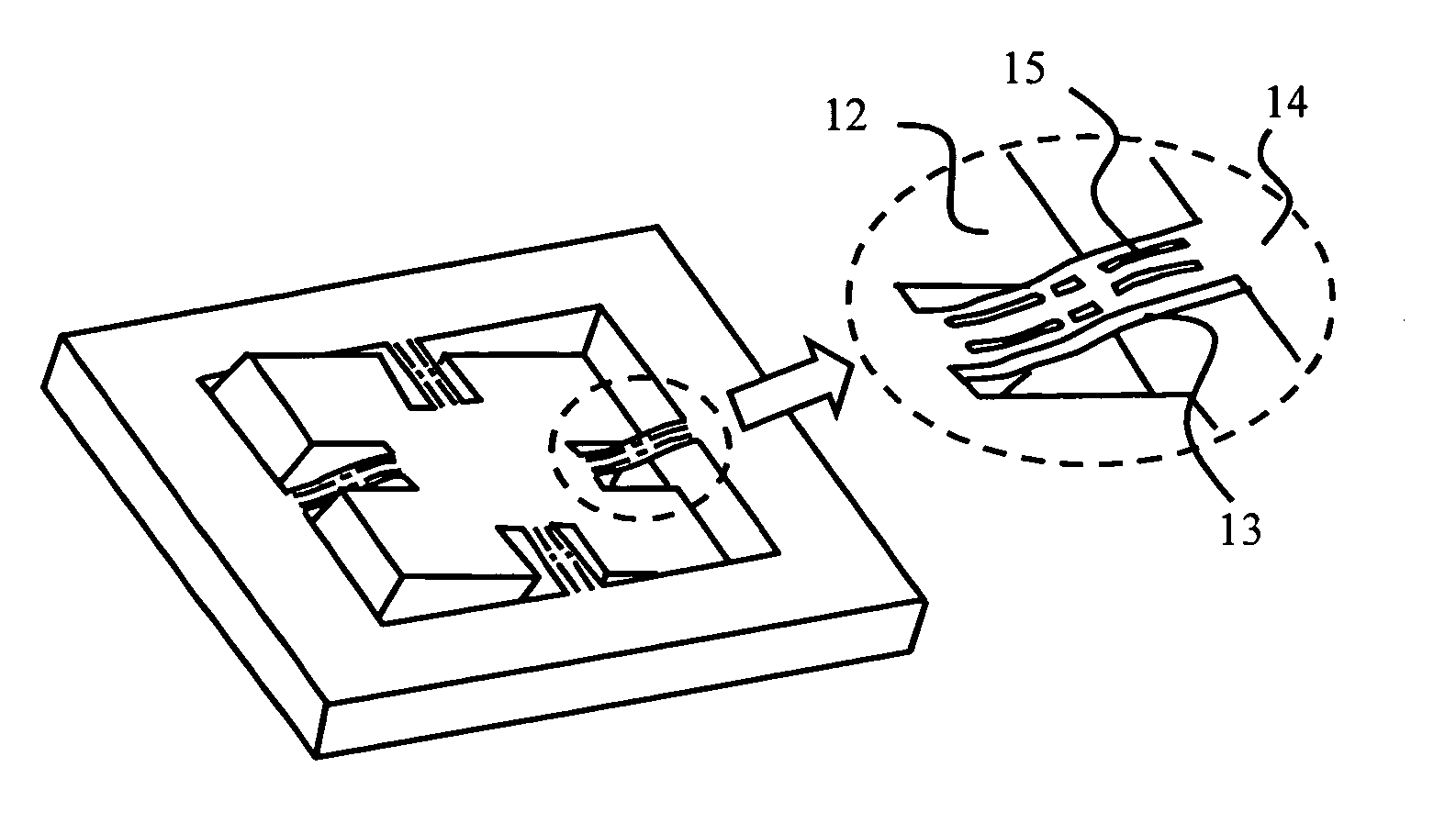Inertial sensor
a sensor and inertial technology, applied in the direction of turning-sensitive devices, acceleration measurement using interia forces, instruments, etc., can solve the problems of no longer serving as sensors, large impact applied to inertial sensors, significant distorted or damaged beams, etc., to improve impact resistance, improve sensor sensitivity, and dissipate areas
- Summary
- Abstract
- Description
- Claims
- Application Information
AI Technical Summary
Benefits of technology
Problems solved by technology
Method used
Image
Examples
first embodiment
[0035] In order to improve the sensitivity of the inertial sensor, the beam width is made small, the thickness is made thin, the length is made long, and the weight of the weigh is made heavy. In addition, the beams are configured to have holes so that the beams can be distorted easily. However, the beams are distorted by the impact, and the stresses are not evenly distributed. If the holes are provided on a part on which the stress is concentrated, the mechanical strength of the beams is degraded. Therefore, distortion portions are provided in the beams of a sensing portion of the inertial sensor in accordance with the present invention. The distortion portion, such as a concave portion configured to be thin, is arranged effectively and appropriately, and thus, the high sensitivity is obtainable together with the impact resistance.
[0036] A description will first be given of the stress generated in the beam when the impact is applied. When the impact is applied to the sensing porti...
second embodiment
[0042] The description has been given of the roots of the sensing portion, which are identical to those of the conventional sensing portion. In view of the improvement of the impact resistance, the mechanical strength of the beam needs to be enhanced in a positive manner. In accordance with a second embodiment of the present invention, the shapes of the roots (edges), on which the stresses are concentrated, in the sensing portion are configured to improve the impact resistance of the sensor.
[0043]FIGS. 4A through 4D illustrate the shapes of the roots in the beam. FIG. 4A is a first example of the roots. FIG. 4B is a second example. FIG. 4C illustrates the conventional shape. The conventional beam has a root shape of a right angle between the weight 12 and the frame 14, as shown in FIG. 3B of the first embodiment of the present invention. However, in accordance with the second embodiment of the present invention, instead of the right angle, the beam 13 is configured to have angles w...
third embodiment
[0047]FIGS. 6A through 6G illustrate examples of the beam shape included in the inertial sensor in accordance with the present invention. The holes 15 are provided symmetrical with respect to a longitudinal direction extending along the center of the beam 13 and another direction perpendicular to the longitudinal direction extending along the center of the beam 13. The piezoelectric resistors 11 are arranged on the beam 13 to avoid the holes 15. The frame 14 includes electrodes 21 and interconnections 22. The piezoelectric resistors 11 are connected with the electrodes 21 and the interconnections 22 and output the changes in the resistance value caused resulting from the movement of the weight 12, to the Wheatstone bridge circuit, not shown.
PUM
 Login to View More
Login to View More Abstract
Description
Claims
Application Information
 Login to View More
Login to View More - R&D
- Intellectual Property
- Life Sciences
- Materials
- Tech Scout
- Unparalleled Data Quality
- Higher Quality Content
- 60% Fewer Hallucinations
Browse by: Latest US Patents, China's latest patents, Technical Efficacy Thesaurus, Application Domain, Technology Topic, Popular Technical Reports.
© 2025 PatSnap. All rights reserved.Legal|Privacy policy|Modern Slavery Act Transparency Statement|Sitemap|About US| Contact US: help@patsnap.com



